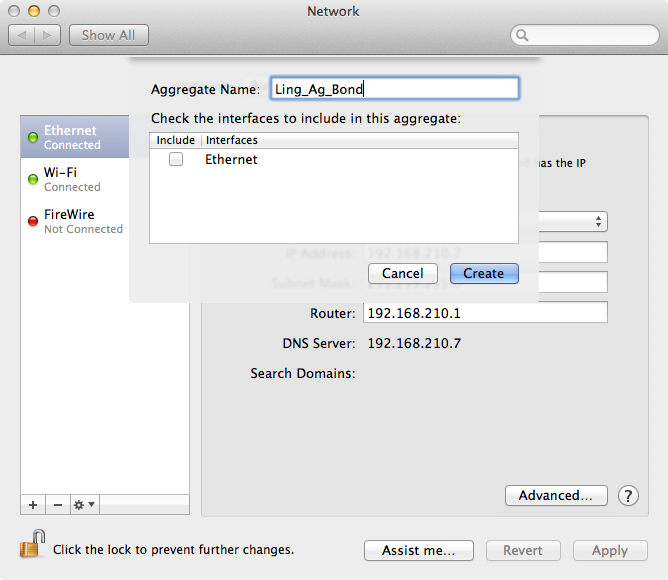Link aggregation bonds two or more network ports so that they act as one. This provides failover and increased throughput. If a cable or a port is severed, connections to servers still function. The bandwidth of multiple ports is also aggregated, giving twice the throughput or more.
Before configuring link aggregation, it will need to be set up on the switch. Each brand of switch has a different process for setting this up. Link aggregation configuration on switches is a complex and advanced topic typically handled by network administrators, and so we will not cover that portion of link aggregation.
To configure link aggregation from within Lion, open the Network System Preference pane and click on the icon of a cogwheel and then click on the option to Manage Virtual Interfaces. From the Manage Virtual Interfaces screen, click on the plus sign (â+â) and then click on the New Link Aggregate⦠option. Provide a name for the link aggregated network and then check the box for each interface to include in the aggregated port, as in Figure 1-6.
When you are happy with the configuration of the ports in the bond, click on Create to complete the bonds configuration. The port configuration will then be green, provided the bond is functioning.
Note
The Xserve has two interfaces. Either can be used for Lights Out Management, a feature that allows administrators to reboot systems remotely. However, if you use Link Aggregation on the two ports, Lights Out Management will no longer function on the server.
Get Using Mac OS X Lion Server now with the O’Reilly learning platform.
O’Reilly members experience books, live events, courses curated by job role, and more from O’Reilly and nearly 200 top publishers.


